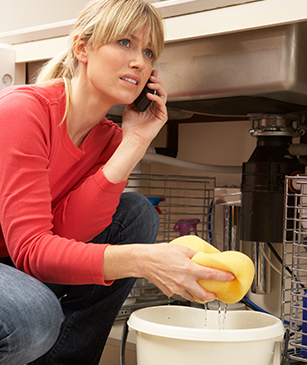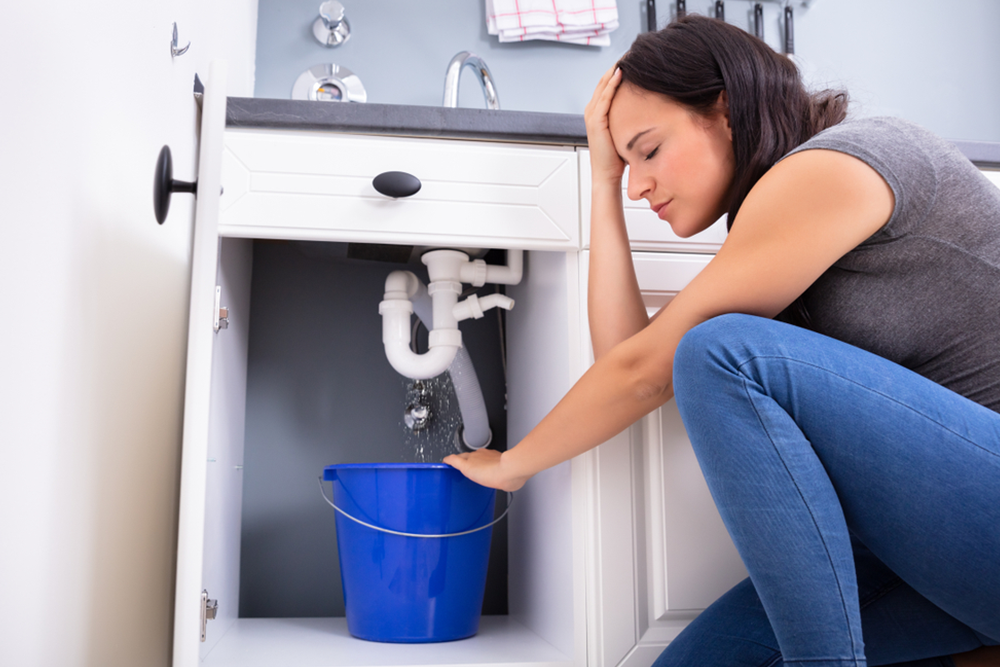Our Definitive Guide to Fixing a Leaky Waste Disposal Unit
Our Definitive Guide to Fixing a Leaky Waste Disposal Unit
Blog Article
We've unearthed this great article pertaining to The Handy Guide To Fixing Your Garbage Disposal Leaking down the page on the web and think it made perfect sense to relate it with you over here.

Waste disposal unit are important cooking area appliances that assist in dealing with food waste effectively. Nonetheless, a leaking garbage disposal can be a discouraging and messy problem to handle. Luckily, several leakages can be fixed easily with a few basic actions. In this write-up, we will review exactly how to fix a dripping garbage disposal properly.
Introduction
Waste disposal unit are mounted under kitchen sinks and are made to shred food waste into smaller sized items, enabling it to travel through the plumbing system easily. While these tools are typically trusted, leaks can occur with time as a result of damage, loose links, or damage to the unit.
Usual Reasons For Leaks in Waste Disposals
Worn Seals and Gaskets
Seals and gaskets play a crucial function in stopping water from dripping out of the garbage disposal. Gradually, these parts can degrade, causing leaks around the disposal system.
Loose Connections
The connections in between the waste disposal unit and the pipes system can become loosened in time, causing water to leakage out throughout operation.
Cracks or Holes in the Disposal Unit
Physical damage to the waste disposal unit, such as cracks or holes in the real estate, can likewise cause leaks.
Determining the Resource of the Leakage
Prior to trying to repair a dripping waste disposal unit, it is essential to determine the resource of the leakage. This can normally be done with aesthetic assessment or by conducting basic examinations.
Visual Evaluation
Check the waste disposal unit system carefully for any type of indications of water leak. Pay attention to locations around seals, gaskets, and link factors.
Examining for Leakages
One method to test for leaks is by running water via the disposal device and looking for any kind of visible indications of leakage.
Tools and Products Needed for Dealing With a Leaking Waste Disposal Unit
Prior to beginning the repair procedure, gather the necessary devices and materials, consisting of a screwdriver, adjustable wrench, plumber's putty, substitute seals or gaskets, and epoxy or patching material for fixing cracks or openings.
Step-by-Step Guide to Dealing With a Leaking Waste Disposal Unit
Shut off the Power
Before attempting any kind of repair work, make certain that the power to the garbage disposal device is turned off to avoid the threat of electric shock.
Situate the Leakage
Identify the precise area of the leakage and determine the cause.
Tighten Links
Make use of a wrench to tighten any loosened connections between the disposal unit and the plumbing system.
Replace Seals or Gaskets
If the leak is due to used seals or gaskets, eliminate the old parts and change them with brand-new ones.
Patching Cracks or Holes
For cracks or openings in the disposal device, usage epoxy or an ideal patching product to seal the damaged location.
Examining the Waste Disposal Unit After Fixing
When the repair work is complete, examine the waste disposal unit by running water with it to make sure that the leak has actually been settled.
Preventive Maintenance Tips to Avoid Future Leakages
To prevent future leakages, it is important to perform routine upkeep on your garbage disposal. This includes maintaining it clean, staying clear of putting non-food products or tough objects down the disposal, and occasionally checking for leakages or other problems.
Verdict
In conclusion, dealing with a leaking garbage disposal is a fairly uncomplicated procedure that can be completed with fundamental devices and products. By adhering to the steps described in this short article and practicing precautionary upkeep, you can maintain your garbage disposal in good working condition and avoid costly repairs in the future.
HERE’S HOW TO FIX YOUR GARBAGE DISPOSAL
WHAT TO DO IF SOMETHING IS STUCK IN YOUR GARBAGE DISPOSAL
If the impeller won’t turn, there’s probably something stuck in the disposal. It could be a steak bone or peach pit, although plumbers report pulling all sorts of inappropriate objects out of disposals, such as bottle caps or aluminum foil. Make sure power to the disposal is off, and look inside to see if you can see the source of the jam.
Never stick your fingers in a disposal. Pull out anything you see with tongs or pliers.
If the disposal still won’t work, it may be time to call a plumber or consider buying a new disposal. GEM Plumbing & Heating is here for all of your garbage disposal needs.
WHAT TO DO IF YOUR GARBAGE DISPOSAL DRAIN IS CLOGGED
Take everything out from underneath your sink and put a bucket or other container under your disposal to catch any water that drains out. Disconnect your disposal from the power supply. If it’s plugged into a wall outlet, unplug it. If it’s hardwired into an electrical box, go to the electrical panel and turn off the breaker for the disposal. Pour ¼ cup of baking soda into the drain, followed by ½ cup of white vinegar. Give the solution a few minutes to fizz and do its work. Look into the disposal with a flashlight to see if you can see an object that might be causing the clog. If you see it, remove it using tongs or pliers. MORE TIPS ON DEALING WITH A CLOGGED GARBAGE DISPOSAL
Never use drain cleaner in a garbage disposal. It can damage the plastic parts inside the disposal. You can also be splashed with the caustic liquid while working to clear the clog. Beware! Never stick your fingers into a garbage disposal. Trust us — not a good idea. In many instances, your dishwasher drains through your garbage disposal. This allows the disposal to grind any large food particles that may be drained out of your dishwasher. There are some jurisdictions, however, where the plumbing code prohibits such a connection. WHAT TO DO WHEN YOUR DISHWASHER DRAINS THROUGH THE DISPOSAL
Run some water in the sink so your plunger has at least a ½-inch of water to create a seal and plunge vigorously up and down several times. You may need to repeat this several times. Run hot water down the drain to clear any residue that remains.

Do you appreciate reading about Why Is ? Write feedback down the page. We would be pleased to hear your responses about this piece. Hoping to see you back again later on. So long as you enjoyed reading our page plz be sure to share it. Thanks for your time. Kindly come visit our website back soon.
Click Here Report this page